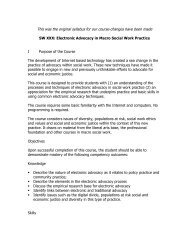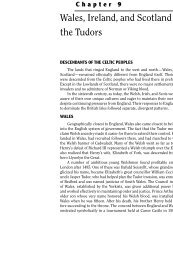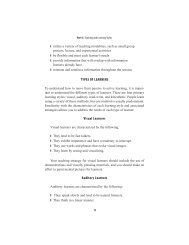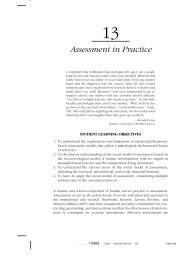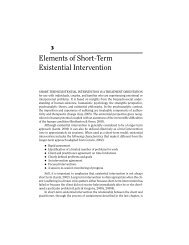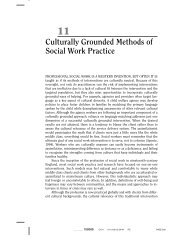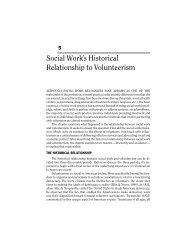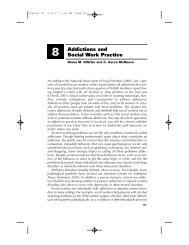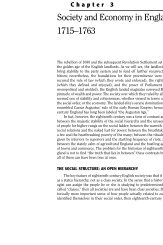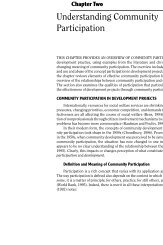Chapter 6 Medieval British Society, 1066–1485 - Lyceum Books
Chapter 6 Medieval British Society, 1066–1485 - Lyceum Books
Chapter 6 Medieval British Society, 1066–1485 - Lyceum Books
You also want an ePaper? Increase the reach of your titles
YUMPU automatically turns print PDFs into web optimized ePapers that Google loves.
138 Part II Norman Britain<br />
had come to own at least a quarter of the land in the several countries of the <strong>British</strong><br />
Isles. If one adds to this the income from tithes and special offerings, it is clear that<br />
at least a third of the national revenue was used for religious purposes. Churchmen<br />
were great landlords, and their involvement with other groups in society was monetary<br />
as well as religious.<br />
The church was also involved in the daily life of ordinary people because its<br />
liturgies were designed to follow an annual cycle that related to the changing of the<br />
seasons and the phases of farming activity. The church blessed the planting of crops,<br />
prayed for their success, and held services of thanksgiving at harvest time. It brightened<br />
the bleak midwinter days with joyous celebrations at Christmas, Epiphany,<br />
and Candlemas. It allowed women to identify with the cult of the Virgin Mary and<br />
to join in her festivals, especially the Feast of the Annunciation (March 25, one of<br />
the most important days in medieval church calendars). It provided for times of<br />
penitence (Advent and Lent) and seasons of rejoicing (Easter and Pentecost). Its<br />
great shrines—not merely Becket’s at Canterbury, but also others like St. William’s<br />
at York, St. Swithun’s at Winchester, and St. Hugh’s at Lincoln—attracted large<br />
numbers of pilgrims and were believed to be responsible for miraculous cures and<br />
healing. It did much to bring warmth, color, and intellectual activity into lives that<br />
otherwise would have been cold, drab, and full of drudgery. It is impossible to know<br />
how many people regularly attended services during medieval times, but the proportion<br />
of the population was certainly higher than in our own day. For many people<br />
in the <strong>British</strong> Isles, the Middle Ages were truly an age of faith.<br />
Wycliffe and the Lollards<br />
During the fourteenth century the English church was unsettled by the activities<br />
of John Wycliffe. A theologian who taught at Oxford, Wycliffe became distressed<br />
at what he regarded as the worldliness and corruption of the clergy, who were often<br />
ignorant, selfi sh men with little genuine spirituality. He hoped that the pope would<br />
reform the church; when this did not happen, he looked to the state for change. For<br />
a time he gained the favor of John of Gaunt and some other lay magnates, but in the<br />
end they too disappointed him.<br />
Wycliffe was fi nally driven to question the most fundamental beliefs of the medieval<br />
church. He came to reject the doctrine of transubstantiation (which holds<br />
that during the communion the priest transforms bread and wine into the substance<br />
of Christ’s body and blood) because he thought it gave the clergy too great control<br />
over the salvation of individual men and women. He argued that papal power had<br />
no scriptural justifi cation. He wanted as many people as possible to read the Bible<br />
themselves, not merely hear portions of it expounded by the clergy. He was one of<br />
the fi rst scholars to translate the scriptures into English. He and his friends produced<br />
the fi rst complete English Bible.<br />
The pope condemned Wycliffe’s teachings in 1377. A few years later he was suspended<br />
from his university post. He was not executed, perhaps because his orthodox<br />
enemies did not wish to make him a popular martyr, but a number of his followers



